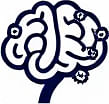Porter's Five Forces: A Vital Tool for Business Strategy
 by Shanie Goodwin
by Shanie Goodwin
Porter's Five Forces offers a clear framework for analyzing industry competition and making strategic decisions. This mental model helps professionals assess threats and opportunities, fostering better cognitive approaches in business and psychology contexts. Learn how to apply it effectively.

Porter's Five Forces stands as a foundational mental model in business strategy, providing a structured way to evaluate market dynamics. This framework, developed by economist Michael Porter, examines the competitive landscape of an industry. By breaking down key elements, it aids in decision-making processes.
The Core Elements of Porter's Five Forces
The model consists of five main components that influence competition. First, threat of new entrants considers how easily new competitors can join the market. Barriers like high costs or regulations can deter entry, protecting established players.
Next, the bargaining power of suppliers looks at how much control suppliers have over prices and terms. If suppliers are few, they might dictate conditions, affecting profitability. On the flip side, the bargaining power of buyers assesses the influence customers wield. A large group of informed buyers can push for better deals or lower prices.
Then, the threat of substitute products or services plays a crucial role. If alternatives exist, they can erode a company's market share by offering similar benefits at different costs. Finally, rivalry among existing competitors gauges the intensity of competition within the industry. High rivalry often leads to price wars and innovation pressures.
Practical Applications in Various Fields
In business settings, this mental model serves as a tool for strategic planning. Companies use it to identify potential risks and strengths before entering new markets or launching products. For instance, a technology firm might analyze the threat of new entrants to decide on investment in barriers like patents.
Beyond business, the principles extend to psychology and cognitive development. Individuals can apply these ideas to personal growth, viewing life's challenges through a lens of competitive forces. Professionals in psychology might explore how these forces shape behavior in organizational environments, helping to build resilience and adaptive thinking.
To illustrate, consider the automotive industry. Here, the bargaining power of buyers has increased with online research tools, allowing consumers to compare options easily. This shift pushes manufacturers to innovate and improve offerings. Similarly, in the food sector, the threat of substitutes from plant-based alternatives challenges traditional meat producers to adapt strategies.
Benefits for Cognitive Development
Engaging with Porter's Five Forces enhances critical thinking skills. It encourages a systematic approach to problem-solving, where individuals weigh multiple factors before conclusions. This method fosters deeper analysis, useful for lifelong learners seeking to refine their decision-making abilities.
In professional contexts, teams often use this model during brainstorming sessions. By mapping out the five forces, groups can uncover hidden opportunities or vulnerabilities. For example, a startup in the e-commerce space might use it to assess rivalry and adjust their marketing tactics accordingly.
From a psychological perspective, applying such models builds mental flexibility. People learn to anticipate changes and respond proactively, which supports personal development. This practice aligns with broader goals in cognitive enhancement, where structured frameworks aid in processing complex information.
Real-World Examples and Case Studies
Take the airline industry as a case study. Here, rivalry among competitors is fierce, with companies like budget carriers entering the market. This intensifies price competition, making profitability challenging. Meanwhile, the threat of substitutes, such as high-speed trains, forces airlines to focus on unique services like comfort and speed.
Another example comes from retail. The bargaining power of suppliers has evolved with global supply chains. Retailers must negotiate effectively to maintain margins, especially when dealing with large suppliers. By using Porter's Five Forces, businesses can strategize partnerships that mitigate these pressures.
In emerging markets, the model helps identify growth areas. For instance, in renewable energy, the threat of new entrants is high due to technological advancements. Companies monitor this to stay ahead, investing in research to sustain their edge.
Integrating the Model into Daily Practice
To make the most of this mental model, start by applying it to your own situation. Begin with a simple analysis of your industry or personal endeavors. List out each force and rate its impact on a scale. This exercise sharpens analytical skills and reveals insights that might otherwise be overlooked.
For teams, incorporating discussions around these forces into meetings can lead to more informed strategies. Over time, this builds a culture of proactive thinking, where potential issues are addressed early.
In summary, Porter's Five Forces remains a timeless tool for navigating strategic challenges. Its straightforward nature makes it accessible yet powerful, aiding in both professional and personal contexts. By adopting this approach, individuals and organizations can achieve greater clarity and success in their pursuits.
